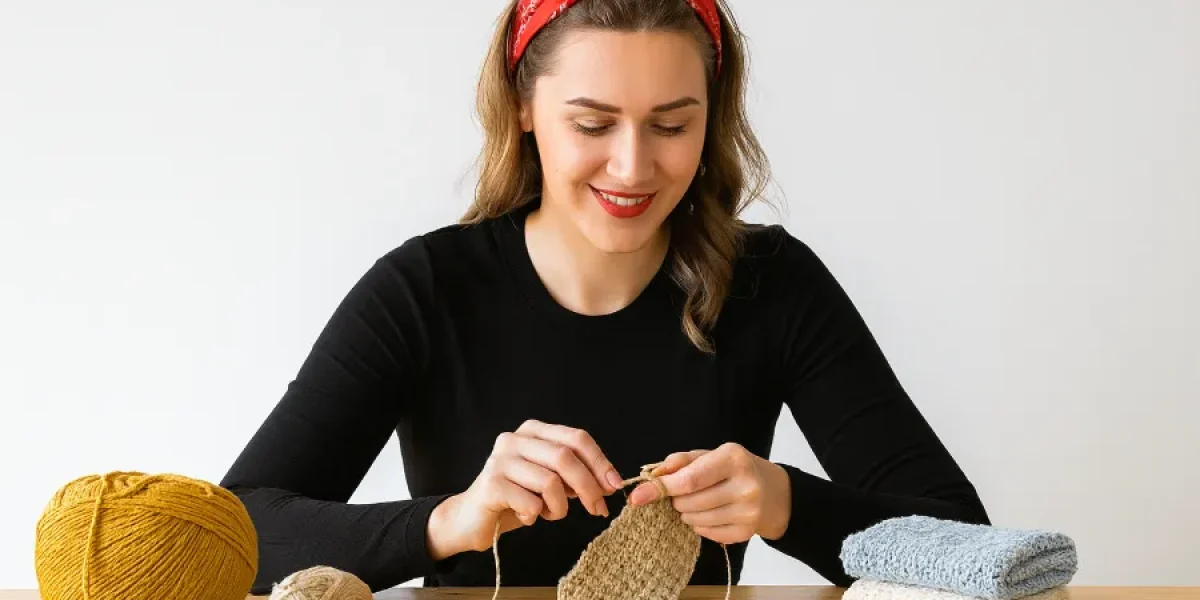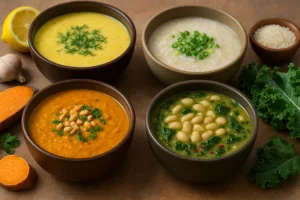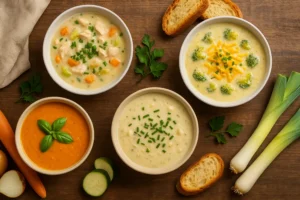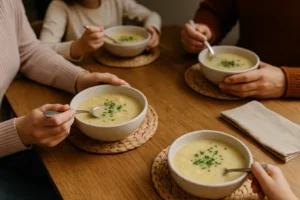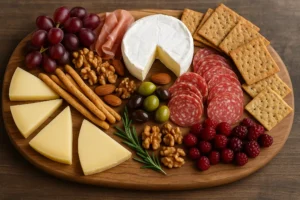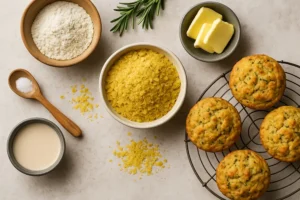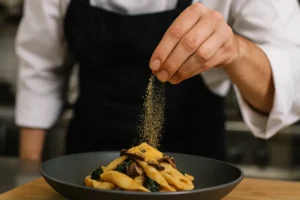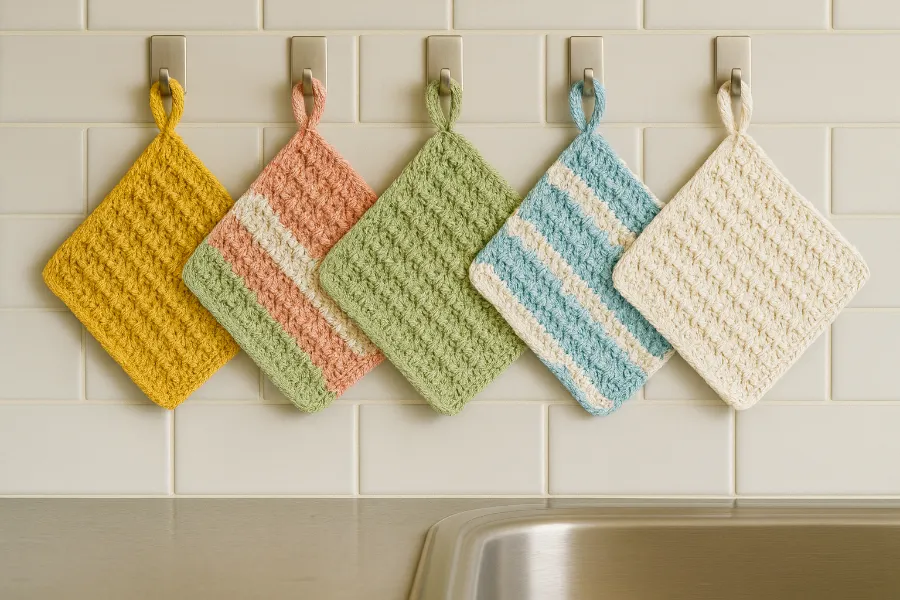
Hey friends! I’ve been on a little mission lately trying to make my kitchen cleaner and greener. One change I’ve absolutely fallen in love with is using a reusable dish cloth instead of disposable sponges or paper towels. It sounds simple, but this swap has saved me money, reduced waste, and actually made cleanup more satisfying. Many people even call it the best eco-friendly replacement for paper towels in kitchen cleaning.
If you’re thinking of doing the same, I want to walk you through everything I’ve learned: what materials are best, how to make or buy one, care tips, patterns I adore and yes, I’ll even tell you how many cloths I keep in rotation so I don’t run out. Let’s dive in.
Cotton Yarn: My Favorite Material
When I first tried making or using reusable dish cloths, I experimented with different materials. Without a doubt, best cotton yarn for dish cloths came out on top. Why?
- It is absorbent fabric that soaks up dish soap suds and water without being soggy forever.
- It holds up in the wash. Cotton yarn doesn’t stretch out like some synthetics, and it doesn’t degrade too fast when laundered.
- It’s soft on delicate surfaces (no scratching) but still sturdy enough for scrubbing.
I like using cotton yarn scraps I already have, or buying organic cotton yarn when I want a new color. Especially with the right stitch (more on that in a bit), a cloth made with quality cotton yarn can last months (or more) and become something you enjoy using.
Wash Cloth vs. Reusable Dish Cloth: What’s the Distinction?
You might wonder: isn’t a wash cloth basically the same thing? They’re close—and in many cases interchangeable—but there are differences I’ve noticed from trial and error:
- Wash cloths are usually meant for skin or soft surfaces. They tend to be thinner or made with gentler yarn or fabric.
- Reusable dish cloths are made to handle grime, grease, heat, and more aggressive cleaning. So they often have denser stitch patterns (if knitted/crocheted) or more robust fabric.
So if you’ve ever searched wash cloth vs reusable dish cloth difference, that’s what I’ve learned. That said, I sometimes repurpose wash cloths for light kitchen work (drying produce, wiping up minor spills) but keep a dedicated set of reusable dish cloths for heavy-duty tasks.
Kitchen Cloth Uses & Why I Keep Several Around
I call one of my cloths the kitchen cloth—basically the workhorse of the bunch. Its jobs include:
- Wiping countertops and stove tops
- Cleaning up spills (both water spills and mess from cooking)
- Drying off dishes or glasses when needed
- Polishing stainless steel, glass, etc.
And here’s the kicker—how many reusable dish cloths do I need to make this rotation work? For me, the magic number is 6–8. One to use NOW, the rest rotating in the wash.
Cleaning Cloth: How to Keep Them Fresh
Using a clean cloth feels so much better than wringing something grimy over the sink. Here are my trusted habits for how to clean reusable dish cloths without odor so they don’t get smelly or gross:
- Rinse after every use under hot water to remove food bits.
- Wring out thoroughly and hang so air can circulate.
- Wash in hot water every few uses.
- Occasionally boil or microwave a damp cloth to sanitize.
- Skip fabric softener—it kills absorbency.
These small steps have kept my reusable dish cloths lasting way longer than I expected.
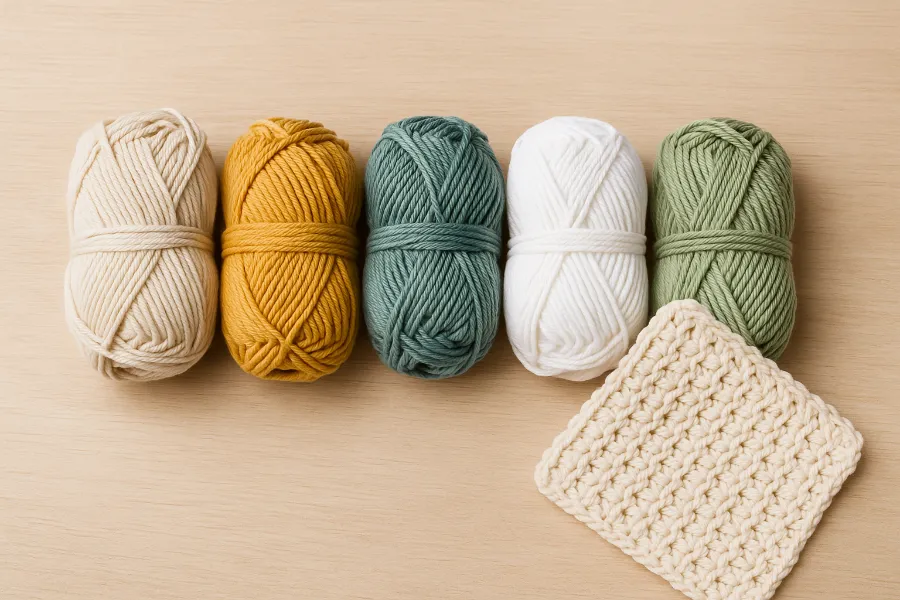
Knit Dish Cloth: My Go-To Project
One of my favorite ways to make a reusable dish cloth is by knitting. It’s therapeutic, customizable, and the results are super useful. I love trying a knit dish cloth pattern for beginners with simple stitches. Here’s what I’ve learned:
- Basic stitches like garter stitch, seed stitch, or simple ribbing give enough texture so the cloth scrubs without scratching.
- Size around 8–9” square for ease of use.
- Start with worsted weight cotton yarn for the best results.
Absorbent Fabric Alternatives: Beyond Yarn
Maybe knitting or crocheting isn’t your thing—and that’s totally fine. I experimented with using pieces of cloths made from absorbent fabric alternatives for dish cloths too. Some winners:
- Terrycloth (recycled from old towels) – super absorbent, great for heavy spills (try a DIY terrycloth kitchen cleaning cloth).
- Flannel – cozy, soft; better for lighter cleaning, drying, dusting.
- Muslin or cotton sheeting – thin but quick to dry.
- Upcycling old cotton T-shirts or sheets – makes for zero-waste cloths.
Crochet Dish Cloth: Texture + Charm
If you like a bit of crochet, a crochet dish cloth with hanging loop adds texture for scrubbing and charm for beauty. Some tips:
- Use stitches like half-double crochet or waffle stitch for texture.
- Always choose cotton yarn—it lasts through washes.
- Add a little loop for hanging so it dries faster and stays fresher.
Dishcloth Pattern Ideas I’ve Tried & Loved
I’m a sucker for pattern variety. Some of my favorite dishcloth pattern ideas:
- Garter Stitch Square – beginner-friendly and sturdy.
- Basketweave or Waffle – textured; great for scrubbing stuck-on bits.
- Granny Square – cute and customizable.
These patterns make reusable cloths fun, functional, and often gift-worthy.
How Many Cloths Is Enough for Me
Here’s what I settled on in my household (2–3 people, kitchen used daily):
- 4 heavy-duty durable reusable dish cloths for greasy pans
- 2–3 lighter cloths for surfaces
- 2 wash cloths in reserve
That balance ensures I never run out and always have a fresh cloth ready.
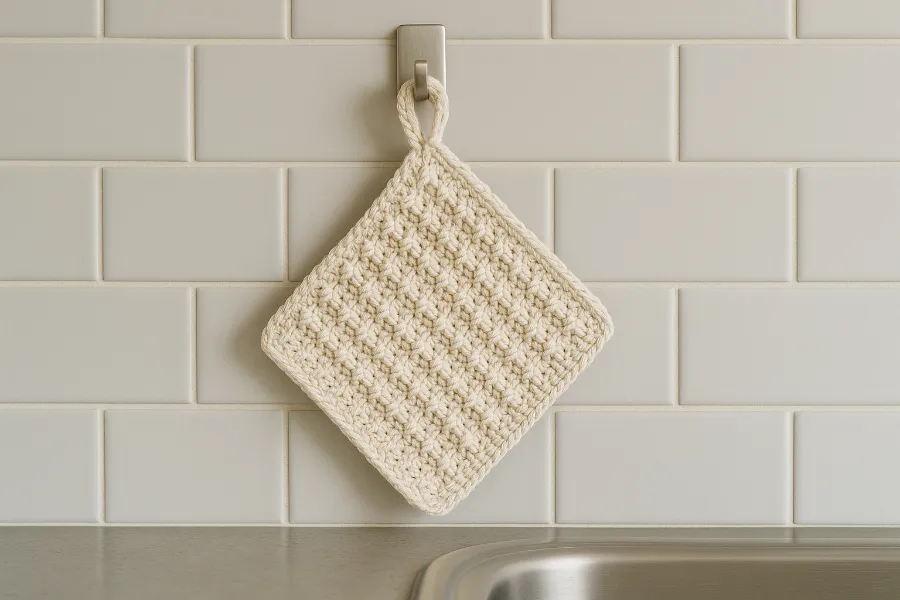
Final Thoughts on Choosing & Using a Reusable Dish Cloth
If you’re thinking of making or switching to reusable dish cloths, here are my takeaways:
- Choose a cloth you’ll enjoy using—texture and color matter.
- Keep a few different cloths for different tasks.
- Wash them frequently, dry them well for durability.
- Don’t overspend—old fabrics can work just as well.
Switching to reusable dish cloths has become one of those small changes in my home that feels good every time I use one.
FAQs
A reusable dish cloth is a washable, eco-friendly alternative to disposable sponges or paper towels. It’s durable, absorbent, and can be used multiple times.
Cotton yarn is the top choice because it’s absorbent, machine-washable, and eco-friendly. Absorbent fabrics like terrycloth or flannel also work well.
Rinse thoroughly after use, air dry, and wash in hot water every few days. For extra freshness, sanitize by boiling or microwaving a damp cloth.
Yes, they’re excellent for wiping counters, drying produce, or cleaning spills. With proper care, they can drastically reduce your paper towel usage.
Both are great—knit dish cloths are dense and sturdy, while crochet dish cloths can offer more texture. The best choice depends on your crafting preference.
With regular washing and care, a reusable dish cloth can last several months. Replace when it becomes thin, frayed, or loses absorbency.
Most households need 6–8 dish cloths in rotation. This ensures you always have a fresh one while others are being washed.

